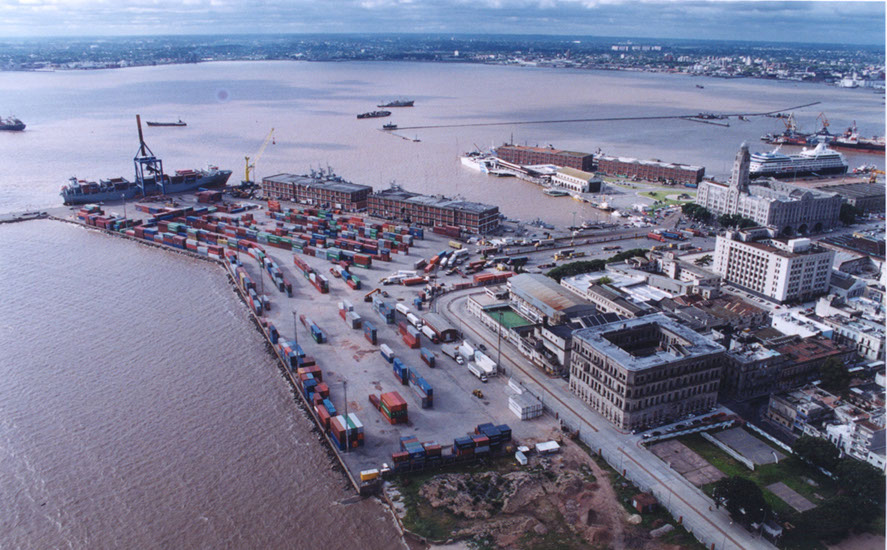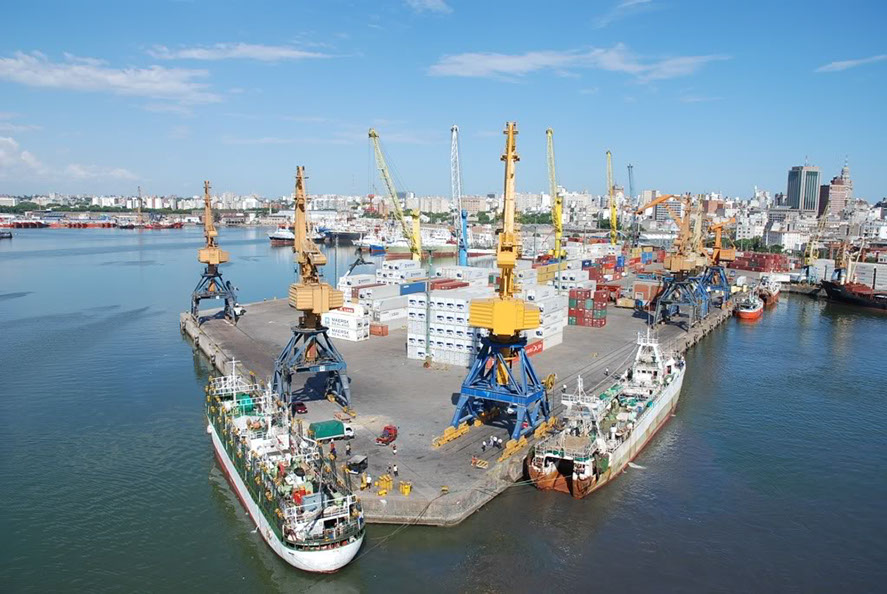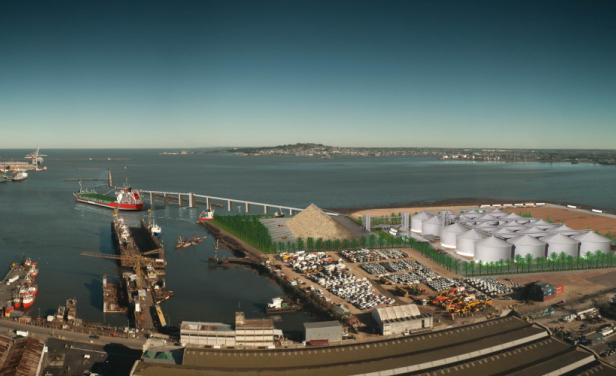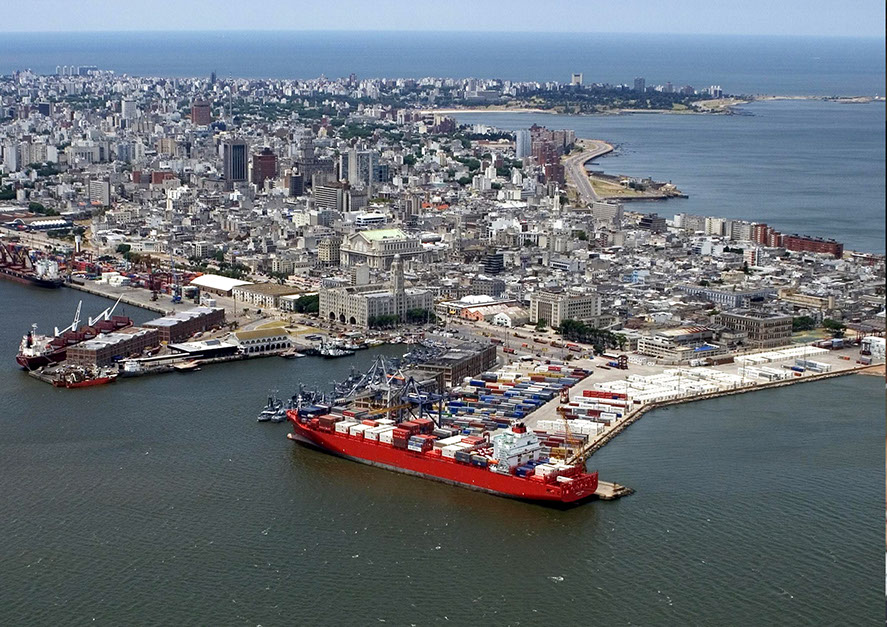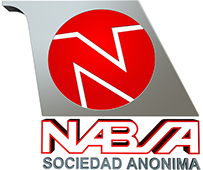
Port of MONTEVIDEO (Uruguay)
The port of Montevideo is located on the River Plate mouth, left margin, and is the port of the capital city of the República Oriental del Uruguay. The port has been built inside of a bay that shelters the installation. Basically the port can be divided in two sections: one, on the eastern side of the bay, is dedicated to the dry cargo, containers and passengers vessels; the second one on the northwestern side, called La Teja, is the oil and gas terminal. The Montevideo entrance channel is dredged to 11,50 m at zero datum.
-The available berths for dry cargo/containers and passengers are the following, from west to east:
- TGM
- PIER 1-2 (MONTEVIDEO)
- PIER C
- PIER 3-4-5 (MONTEVIDEO)
- PIER 6-7 (MONTEVIDEO)
- PIER B (MONTEVIDEO)
- PIER 8-9 (MONTEVIDEO)
- PIER 10-11 (MONTEVIDEO)
- LA TEJA TERMINAL (Refinery)
TERMINALS
- TGM
- PIER 1-2 (MONTEVIDEO)
- PIER C
- PIER 3-4-5 (MONTEVIDEO)
- PIER 6-7 (MONTEVIDEO)
- PIER B (MONTEVIDEO)
- PIER 8-9 (MONTEVIDEO)
- PIER 10-11 (MONTEVIDEO)
- LA TEJA TERMINAL (Refinery)
CUENCA DEL PLATA TERMINAL (TCP)
This terminal is operated by a states/ private company. The ANP (National Port Administration and Messrs. Katoen Natie, from Belgium. This terminal is specialized in containers.
Container ships have priority at this berth, which is 640 m long, allowing the operation of Full Container type vessels.
Load / discharge of vessels, trains and trucks. Empty & Full containers storage. Reefer containers connection and monitoring. This is the only terminal in Montevideo that washes IMO containers
TGM TERMINAL
This terminal is specialized in grains.
Remarks:
1) As per pilot regulation vessel with 12 meters of draft must sail with not less than 1 meter of tide maintained during not less than 3 or 4 hrs.
2) At Montevideo port, due to lack of regular maintenance by port authorities, normally the lowest depth points are always next to the pier due to soft mud accumulation. From sea side the depth is always much more.
3) Considering the above provided information is highly recommendable include the NAABSA clause for vessels calling MVD.
- Main channel is dredged at 12 meters to 0 tide level in all is extension.
- Soft mud.
- NAABSA clause recommended (customary)
- BW. Density between 1.001 and 1.015 (salinity is affected also by winds’ direction and intensity).
- UKC not controlled neither by pilots nor by Coast Guard
- Navigation, berthing and unberthing can be carried out during day and night.
- Use of tug and pilots is compulsory.
- There is neither LOA nor breadth restriction till Post Panamax size.
- Working hours:
Shifts are the following: 0700-1500/1500-2300/2300-0700.
Working around the clock 24 hours / day from Monday to Sunday. Sundays are considered as holiday, but normally this does not interfere with operation
- Mooring men and service boat attending berthing/unberthing maneuvering on Terminal’s account.
- Pier length is 310 meters (dolphin to dolphin)
- Beam restriction is 50 meters
- Terminal counts with 12 silos of about 10.000 tons each one.
- Loading rate as reference only based on soya/wheat is about 14.000 tons/day.
- The connection of the vessel with ashore is done by service boat only.
TSAKOS DAM
This floating dock is concessioned to Tsakos. Ship repairs and spar parts.
PIER 1 & 2
Remarks:
1) At Montevideo port, due to lack of regular maintenance by port authorities, normally the lowest depth points are always next to the pier due to soft mud accumulation. From sea side the depth is always much more.
2) Considering the above provided information is highly recommendable include the NAABSA clause for vessels calling MVD.
3) According to the recommendation of our advisor pilot (as reference only) the max arrival draft would be around 10.50 meters BW (as ref only / W.O.G.) based on average tide level.
- Main channel is dredged at 12 meters to 0 tide level.
- BW. Density between 1.001 and 1.015 (salinity is affected also by winds’ direction and intensity).
- Soft mud.
- NAABSA clause recommended (customary)
- UKC not controlled neither by pilots nor by Coast Guard
- Navigation, berthing and unberthing can be carried out during day and night.
- Use of tug and pilots is compulsory.
- There is not neither loa nor breadth restriction till Post Panamax size.
- Public/multipurpose pier.
- The length of the pier is 303 meters (bollards 55-68).
- Working hours:
Shifts are the following: 0700-1500/1500-2300/2300-0700.
Working around the clock 24 hours / day from Monday to Sunday. Sundays are considered as holiday, but normally this does not interfere with operation
PIER 6 & 7
Remarks:
1) At Montevideo port, due to lack of regular maintenance by port authorities, normally the lowest depth points are always next to the pier due to soft mud accumulation. From sea side the depth is always much more.
2) Considering the above provided information is highly recommendable include the NAABSA clause for vessels calling MVD.
3) Acc to the recommendation of our advisor pilot (as reference only) the max arrival draft wld be ard 10.30 meters BW (as ref only / wog) based on average tide level.
- Main channel is dredged at 12 meters to 0 tide level.
- Average tide level 0.91 meters affected basically by winds’s direction and intensity.
- BW. Density between 1.001 and 1.015 (salinity is affected also by winds’ direction and intensity).
- Soft mud.
- NAABSA clause recommended (costumary)
- UKC not controlled neither by pilots nor by Coast Guard
- Navigation, berthing and unberthing can be carried out during day and night.
- Use of tug and pilots is compulsory.
- There is not neither loa nor breadth restriction till Post Panamax size.
- Public/multipurpose pier
- The length of the pier is 294 meters (bollards 90-102).
- Working hours:
Shifts are the following: 0700-1500/1500-2300/2300-0700.
Working around the clock 24 hours / day from Monday to Sunday.
Sundays are considered as holiday, but normally this does not interfere with operation
LA TEJA TERMINAL
This terminal is operated by ANCAP (state refinery) and is located at the North part of the Montevideo bay, at the end of La Teja access main channel.
Depending on the product to be discharged and/or to be loaded vessels will berth either at North pier or at South pier. Terminal has also pier West but it is not being used.
Berthing is allowed any time as there is no restrictions either for berthing or for unberthing maneuverings during night time, so ships will be able to proceed alongside or leave the terminal whenever needed, 24 hours a day subject to availability of shore mooring personnel.
Pilot's boarding position as ref only as follow: 35º 00 South / 056º 13 West .
Final embarking position to be coordinated with pilot boat Ederra by VHF channel 11 or 16.
Density of water as ref. only: 1005 / 1012 (brakish water) affected by winds’ direction and intensity.
North Pier: Location: 34°52'43.98"S / 56°13'55.99"0
Products: to load/discharge oil products in general including luboils.
Vessel's side alongside: usually portside (vessel must be turned at La Teja basin on arrival)
Maximum LOA: abt 180 mts subject to ANCAP approval.
Maximum BEAM: abt 30 mts subject to ANCAP approval.
Connection: shore hoses connections 10 Inches
Rate: to be fixed between Terminal and vessel
Gangway: vessel's gangway to be used
De-ballasting: no special requirements (ballast exchange acc to international regulations)
Draft alongside: Maximum recommendable draft according to pilots either for berthing or for unberthing is 21 feet with tide level not less than 0,70 mts. The tide is affected basically by winds’s direction and intensity. Astronomical tide has a secondary influence. Winds from the South improve the tide level and from the North reduce the same.
Remarks:
- Q88 must be sent to Terminal to get the vessel approval.
- The draft of the vessel must be kept constant all times or at least not exceed the admissible draft.
- The crane of the vessel must be 100 % operative to assist in the necessary connections.
South Pier: Location: 34°52'49.16"S / 56°1356.70"
Products: to discharge LPG and to load/discharge oil products.
Vessel's side alongside: usually starboard side (vessel must be turned at La Teja basin on arrival)
Maximum LOA: abt 130 mts subject to ANCAP approval.
Maximum BEAM: abt 30 mts subject to ANCAP approval.
Connection: shore hoses connections, 6 Inches for Gas products, 8 Inches for others.
Rate: to be fixed between Terminal and vessel
Gangway: vessel's gangway to be used
De-ballasting: no special requirements (ballast exchange acc to international regulations)
Draft alongside: Maximum recommendable draft according to pilots either for berthing or for unberthing is 21 feet with tide level not less than 0,70 mts. The tide is affected basically by winds’s direction and intensity. Astronomical tide has a secondary influence. Winds from the South improve the tide level and from the North reduce the same.
Remark:
- Q88 must be sent to Terminal to get the vessel approval.
- The draft of the vessel must be kept constant all times or at least not exceed the admissible draft.
- The crane of the vessel must be 100 % operative to assist in the necessary connections.
Access channel depth: Please note that according to the information of our advisor pilot the depth of the channel is from 7m to 8m so the draft limitation is not at the channel, it is next to the pier.
ISPS information: Terminal complies with ISPS code being its PFSO details as follows:
PFSO La Teja Terminal:
Eng. Capt. Enrique Saint Martin
Tel: 00598 2 3094501 ext. 3424 or 3428 VHF Channel 07 USA
E mail: esaintmart@ancap.com.uy
Current security level at Terminal: 1
Services available at La Teja Terminal:
De-slopping ops, if needed, is possible. The procedure is to take a sample upon ship's arrival to be sent to laboratory for analysis. Afterward, subject to results of mentioned analysis, de-slopping will be authorized or not.
Garbage to be disposed, if needed, only via service boat either before or after cargo operation if it’s finally authorized by Terminal.
Fresh water is available at the Terminal to be delivered by means of hoses. Please consider that the loading rate is very low.
Crew change, delivery of provisions, etc: This operations are allowed but due to Terminal safety policies, they must be carried out always by sea side service boat.








Port of
MONTEVIDEO (URUGUAY)
back >>

